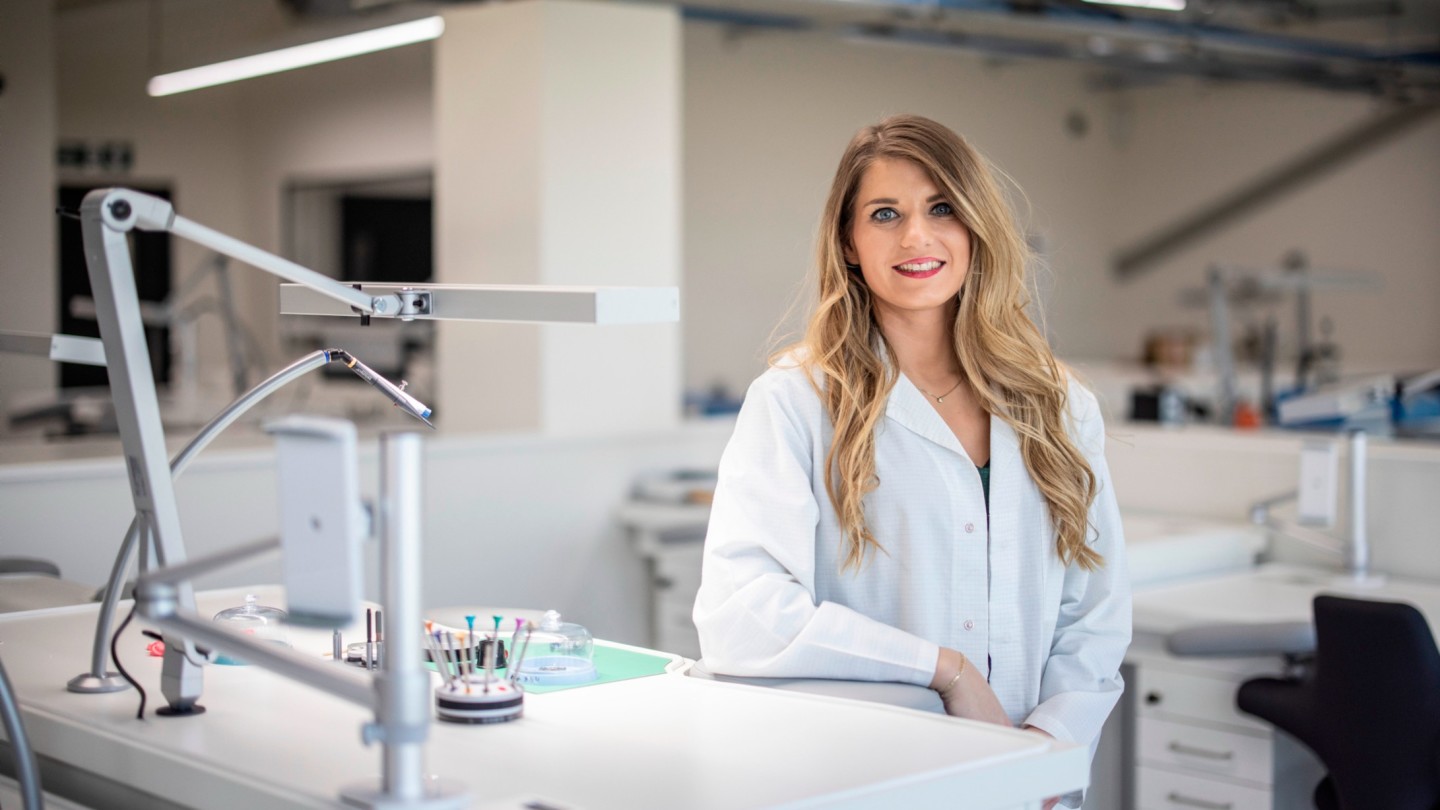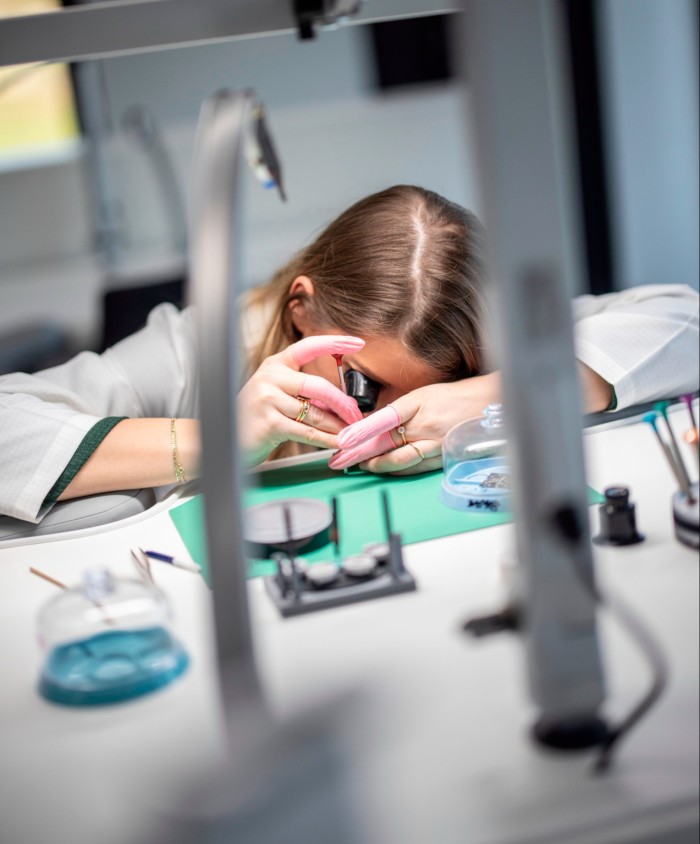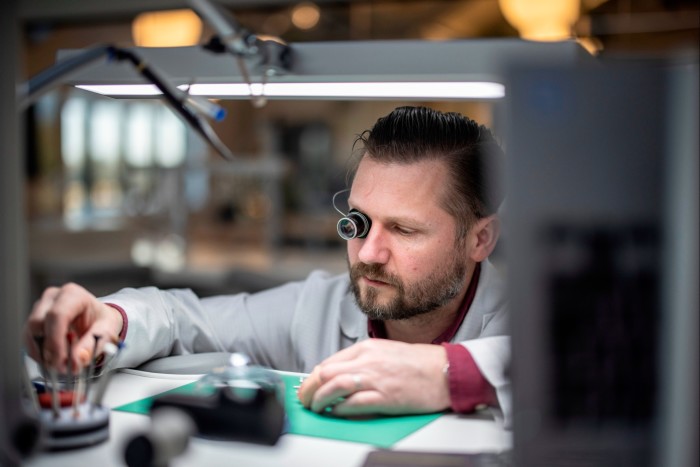Megan Young: ‘People ask why watch servicing is so expensive’

Roula Khalaf, Editor of the FT, selects her favourite stories in this weekly newsletter.
The stereotypical image of a watchmaker might be that of a bespectacled older gentleman with wizened fingers, wild hair, and a poor posture resulting from years hunched over the bench.
But that certainly does not describe 29-year-old Megan Young who, in less than a decade, has gone from horology student to founder of the fastest-growing independent service facility in the UK.
Dutch-born Young, whose father comes from Manchester and whose late mother was from the Netherlands, is director of the Hertfordshire-based Watch Atelier, an independent business born out of the service department of pre-owned luxury goods retailer Xupes.
Xupes’s watch sales division became Chrono24 UK after being acquired by the German online platform Chrono24 in the summer of 2021 — leaving the service and repair side (then called Xupes Services) available for takeover.
With the help of a £500,000 loan, Young has expanded the facility — which is housed in a converted Victorian barn — to incorporate 28 bespoke benches, eight Recomatic polishing machines, automated ultrasonic cleaning equipment, and numerous other devices that will enable the business to increase throughput while enhancing quality.
It marks a career high point for the aptly-named Young, who knew she wanted to be a watchmaker even before finishing school. “When I was in my early teens, I went to an event showcasing craft professions, and that’s where I discovered watchmaking,” she says. “I decided to leave school at 16 and enrol on a four-year-horology course, which included two apprentice years during which I worked with Frédérique Constant, a brand founded by Peter and Aletta Stas who, like me, are Dutch.”

The experience revealed Young’s love for problem-solving. Her obvious passion for her chosen profession soon landed her a job at the Hamburg flagship of long-established watch and jewellery retailer Wempe.
Wempe subsequently moved Young to its London store, at which she attained service accreditations with Cartier, Baume & Mercier, Panerai and Patek Philippe — all before the age of 23 and within the space of three years. She has since added Rolex to her list of accreditations. At 25, she was recruited to establish the first watch service and repair workshop for luxury department store Harrods, before being headhunted by Xupes in the summer of 2019. “Having spent three years growing the servicing side of Xupes and developing relationships with clients, the opportunity to take it over seemed too good to miss,” says Young, who currently employs 15 watchmakers and technicians — a number she hopes to increase to 50.
“It’s well known that the pre-owned watch market has grown dramatically in recent years, and people have come to understand that if they want to be able to sell a watch for decent price in the future they are going to need to look after it,” she explains.
“The servicing side of the industry has changed a lot. Previously, people were a bit oblivious to it but, now that brands are publicising its availability and cost, many owners are asking why it has to be so expensive.
“Our aim is to make servicing and repair more affordable, but that does mean that our margins are small — skilled staff need to be paid good wages, and equipment can be very expensive. A single Bluetooth timing machine, for example, costs around £5,000.”

Less than six months since the launch of the Watch Atelier, throughput has increased from around 120 watches per month to more than 300 thanks to a combination of work from private clients, retailers and jewellers as well as from the neighbouring Chrono24 UK operation.
Estimates for work are provided free of charge, and typical servicing rates are £380 to £400 for a good quality, three-hand watch, rising to £450 to £550 for a chronograph, and up to £2,000 for high complication watches, such as perpetual calendar models.
These quotes compare favourably with the service and repair estimates given by brands directly — where a watch is often sent back to the manufacturer in Switzerland or elsewhere — with costs being almost always higher.
“As well accounting for the fact that more complicated pieces need to be dealt with by very senior watchmakers and polishers, we also have to cover ourselves for the financial risk associated with working on them,” says Young. “It’s an aspect of watch servicing that I don’t think many brands explain to their customers at the point of sale.”
When it comes to repairing badly damaged watches, however, there are some that can present a challenge to even Young’s considerable skills and Watch Atelier’s state of the art facilities. “We were recently sent a Rolex Submariner Reference 5513 [worth around £15,000 in good condition],” says Young.
“We couldn’t imagine what had happened to it, until the owner explained that his wife had lost her temper with him, thrown the watch on the ground and repeatedly driven over it. Unfortunately, there’s not much from this one that can be saved . . .”
Comments